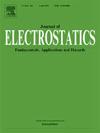Review on scientific studies and commercial indoor air purification devices: Focus on plasma-catalytic technology
IF 2.1
4区 工程技术
Q3 ENGINEERING, ELECTRICAL & ELECTRONIC
引用次数: 0
Abstract
According to World Health Organization, urban populations spend 90 % of their time in indoor environments. Accentuated by the recent COVID-19 pandemic, this raises important concerns about the quality of the indoor air, which often contains various types of contaminants within three main categories: biological, volatile organic compounds, and particulate matter. Several technologies already exist for removing contaminants from indoor air, such as electrostatic based methods or filtration. Although these technologies are well established, they often target only one or two groups of contaminants. This review focuses on a promising technology: nonthermal plasma combined with catalysts. After an overview of indoor air contaminants, their sources, and the typical methods used for their removal, a highlight is put on the available commercial indoor air purification devices. The latter are rarely described in literature, and the comparison with lab-scale experiments are difficult due to the lack of information and available data from the manufacturers. The limitations of those systems are also discussed. As most of these commercial devices use combinations of various conventional technologies, the last part focuses on the ongoing research on plasma-catalytic systems. The main mechanisms are presented along with recent literature. Finally, some perspectives for its future development are proposed.
室内空气净化装置的科学研究与商用综述:以等离子体催化技术为重点
根据世界卫生组织的数据,城市人口90%的时间是在室内环境中度过的。最近的COVID-19大流行加剧了人们对室内空气质量的严重担忧,室内空气通常含有三大类不同类型的污染物:生物、挥发性有机化合物和颗粒物。已有几种技术可以去除室内空气中的污染物,如静电方法或过滤。虽然这些技术已经很成熟,但它们通常只针对一两类污染物。综述了一种很有前途的技术:非热等离子体与催化剂的结合。在概述了室内空气污染物、它们的来源以及用于去除它们的典型方法之后,重点介绍了可用的商用室内空气净化装置。后者很少在文献中描述,并且由于缺乏来自制造商的信息和可用数据,很难与实验室规模的实验进行比较。讨论了这些系统的局限性。由于这些商用设备大多使用各种传统技术的组合,最后一部分重点介绍了正在进行的等离子体催化系统的研究。主要机制与最近的文献一起提出。最后,对其未来的发展提出了展望。
本文章由计算机程序翻译,如有差异,请以英文原文为准。
求助全文
约1分钟内获得全文
求助全文
来源期刊

Journal of Electrostatics
工程技术-工程:电子与电气
CiteScore
4.00
自引率
11.10%
发文量
81
审稿时长
49 days
期刊介绍:
The Journal of Electrostatics is the leading forum for publishing research findings that advance knowledge in the field of electrostatics. We invite submissions in the following areas:
Electrostatic charge separation processes.
Electrostatic manipulation of particles, droplets, and biological cells.
Electrostatically driven or controlled fluid flow.
Electrostatics in the gas phase.
 求助内容:
求助内容: 应助结果提醒方式:
应助结果提醒方式:


